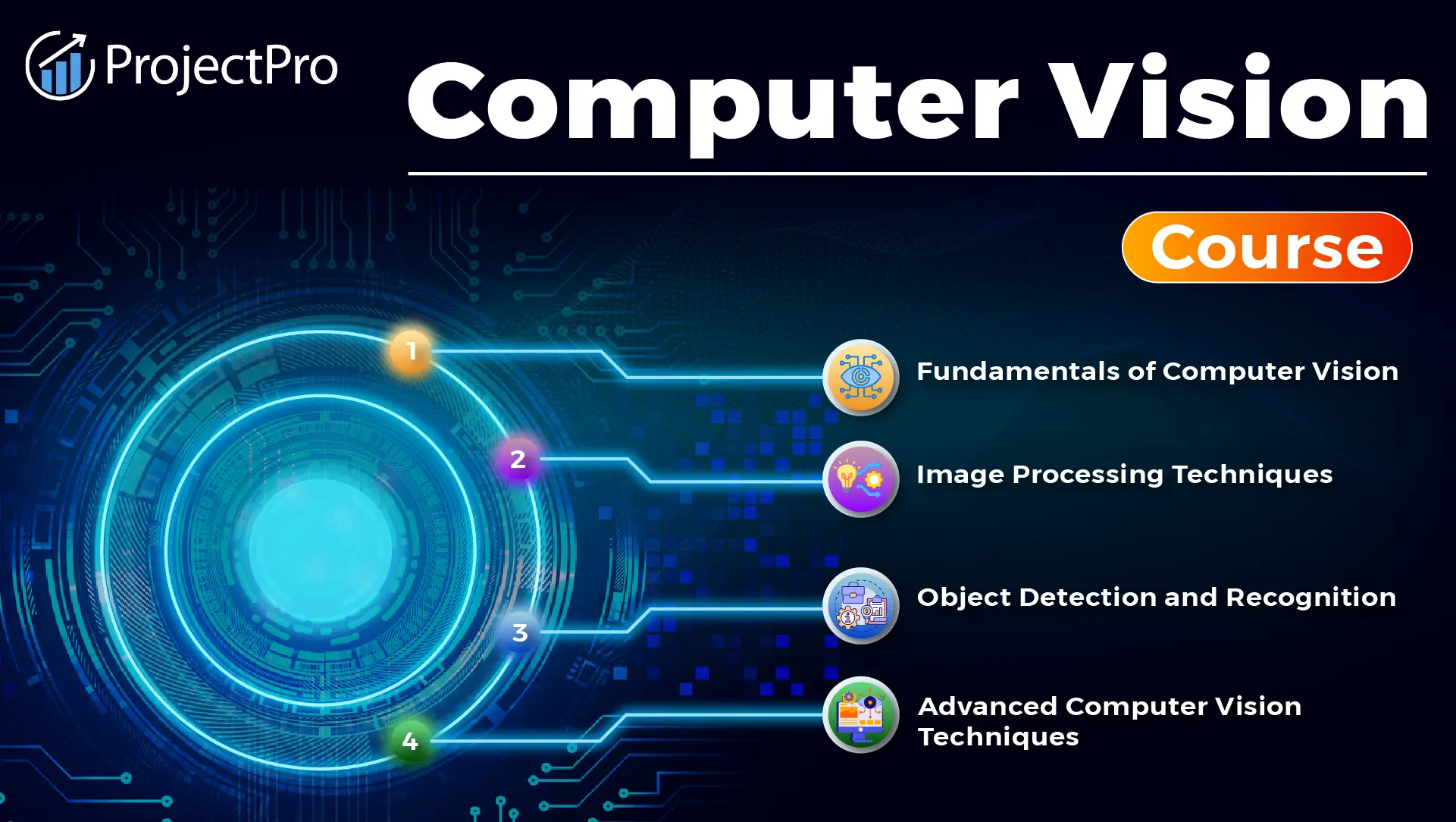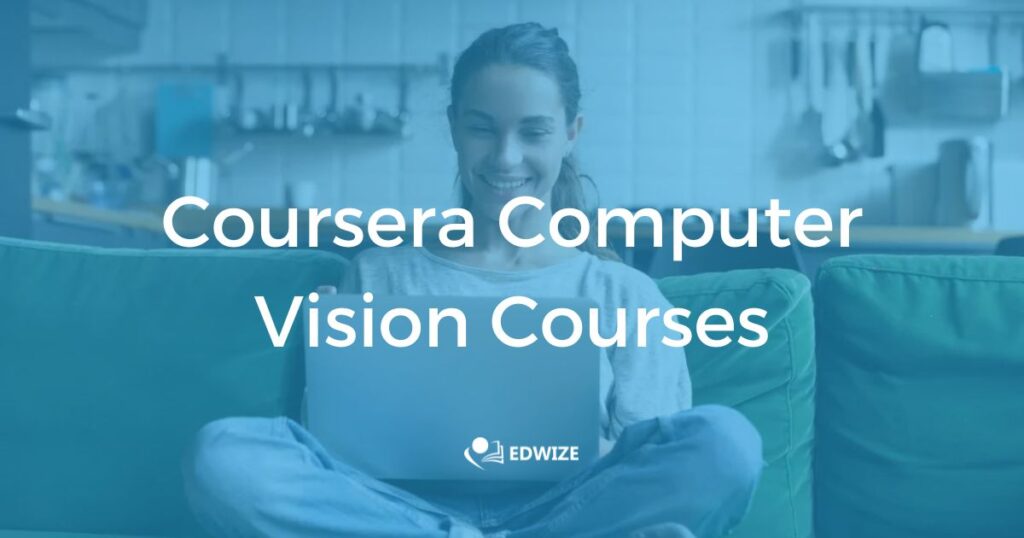Seeing the World Through Code: My Journey Through a Computer Vision Course
Remember those sci-fi movies where robots or computers could just look at something and instantly understand what it was? Identify faces, spot objects, or even predict what might happen next? For the longest time, that felt like pure magic to me, something light-years away from reality. Then, I stumbled upon the world of Computer Vision, and suddenly, that magic started to feel a whole lot like brilliant engineering.
My curiosity eventually led me to enroll in a Computer Vision course, and let me tell you, it was one of the most eye-opening experiences I’ve had. If you’ve ever wondered how your phone recognizes your face, how self-driving cars "see" the road, or how medical scans can detect tiny anomalies, then buckle up. I’m going to share my adventure, from being a complete beginner to feeling like I could teach a computer to see – at least a little bit!
What Even Is Computer Vision? My First Glimpse
Before I signed up, my understanding of Computer Vision was pretty fuzzy. I knew it involved computers and images, but that was about it. The course started with a simple, yet profound, idea: Computer Vision is about teaching machines to interpret and understand the visual world, just like we humans do.
Imagine trying to explain to an alien what a cat is, without ever showing them one. You’d describe its fur, its whiskers, its shape. That’s kind of what we do with computers, but in a much more structured, mathematical way. My instructor put it perfectly: "We’re giving computers eyes, and then teaching them to make sense of what those eyes perceive." It sounded daunting, but also incredibly exciting. I realized this wasn’t just about cool tech; it was about mimicking one of the most fundamental human abilities.
Diving In: The Building Blocks of Sight
The first few weeks of the Computer Vision course felt a bit like learning a new language. We started with the very basics, peeling back the layers of how an image exists inside a computer.
Pixels and the Image Canvas
To a computer, an image isn’t a picture; it’s a grid of numbers. Each tiny square, a "pixel," holds a numerical value representing its color and brightness. For a black and white image, it might be 0 for black, 255 for white, and shades in between. For color, it’s usually three numbers – one for red, one for green, and one for blue (RGB). This foundational concept was crucial. Before we could teach a computer to "see" a cat, it first needed to understand that a cat was just a collection of these number grids arranged in a certain way. Manipulating these numbers became our first playground. We learned to make images brighter, darker, or even invert their colors – simple stuff, but it showed the power of changing numbers to change what we see.
Filters and Features: Making Sense of the Noise
Once we understood pixels, the course moved on to a more interesting challenge: how do you find things in an image? How does a computer know where an edge is, or a corner? This is where "filters" came in. Think of a filter as a small magnifying glass that slides over the image, performing a little calculation at each pixel.
We learned about filters that could sharpen an image, blur it, or, most importantly, highlight edges. Edges are incredibly important because they define the boundaries of objects. Suddenly, a simple image of a square could be transformed into just four lines – the essential "features" that make it a square. This part of the Computer Vision course felt like learning the alphabet of visual understanding. We were teaching the computer to pick out the most important visual clues, not just absorb all the raw pixel data.
From Features to Faces: Object Recognition
With edges and features under our belt, we started tackling bigger problems. How do you go from a bunch of lines to recognizing a specific object, like a human face or a car? This is where things got really interesting. We explored different methods for finding patterns within these features. It wasn’t about memorizing every single pixel of every face, but about identifying common characteristics – the arrangement of eyes, nose, and mouth, for example.
This section of the Computer Vision course involved learning about classifiers, which are essentially algorithms that can learn to categorize things. You show it many examples of cats and non-cats, and it learns to tell the difference. It’s a bit like teaching a child: "This is a cat. This is also a cat. This is not a cat." After enough examples, the child (or computer) gets pretty good at it.
The Game Changer: Deep Learning and Neural Networks
If the first half of the course was about learning the rules of the visual world, the second half felt like discovering a superpower: Deep Learning. Specifically, we dove into Convolutional Neural Networks (CNNs). This was the part that truly blew my mind and is often the core of modern Computer Vision courses.
Before CNNs, we had to manually tell the computer what features to look for (edges, corners, etc.). It was a bit like me telling my alien friend, "A cat has pointy ears, so look for triangles on top of its head." But with CNNs, the computer largely figures out the important features itself.
Imagine a network of interconnected "neurons" (mathematical functions) arranged in layers. When you feed an image into a CNN, the first layers might learn to detect simple edges. The next layers combine those edges to detect shapes, like circles or squares. Further layers combine those shapes to detect parts of objects, like an eye or a wheel. And finally, the very last layers combine all this information to recognize the entire object – a face, a car, or even a specific breed of dog.
The sheer power of this approach was incredible. Instead of painstakingly designing feature detectors, we could now feed a massive amount of labeled images (e.g., "this is a cat," "this is a dog") into a CNN, and it would learn to extract the most relevant features on its own. It’s why things like face unlock on your phone work so well, and why self-driving cars are becoming a reality. This part of the Computer Vision course wasn’t just theory; we got to build our own simple CNNs and train them to classify images, and seeing it work was genuinely thrilling.
My ‘Aha!’ Moments and the Joy of Building
Throughout the Computer Vision course, there were countless moments where things just clicked. One of the most satisfying was building a simple face detection program. Seeing a bounding box appear around my face in a live video feed, powered by code I had written (with guidance, of course!), felt like I was wielding a piece of the future.
We worked on various projects:
- Image filters: Creating our own versions of Instagram filters.
- Object counting: Training a model to count how many specific items were in an image.
- Basic image classification: Building a system that could tell the difference between different types of animals.
Debugging was a big part of the fun (and frustration!). Sometimes a model wouldn’t perform well, and we’d have to tweak parameters, adjust the network architecture, or gather more training data. This iterative process taught me the importance of patience and experimentation, skills invaluable in any tech field. The practical experience was truly the heart of the Computer Vision course.
Who Should Consider a Computer Vision Course?
My experience showed me that a Computer Vision course isn’t just for aspiring AI researchers. It’s for anyone with a curious mind and an interest in how technology is shaping our world.
- Software Developers: Want to add visual intelligence to your applications? This is your path.
- Data Scientists: Images and videos are massive datasets, and knowing how to extract insights from them is a huge advantage.
- Robotics Enthusiasts: Robots need to see to interact with their environment.
- Entrepreneurs: Have an idea for a product that uses visual recognition? This course can give you the foundation.
- Anyone Curious: If you’re simply fascinated by how machines learn to see, this course offers a fantastic deep dive.
You don’t need to be a math genius, though a basic understanding of linear algebra and calculus helps. What you really need is a willingness to learn, experiment, and not be afraid of a bit of coding. Most good Computer Vision courses are designed to ease you into the mathematical concepts.
Looking Ahead: My Vision for the Future (and Yours!)
Finishing my Computer Vision course left me with a profound appreciation for the complexity and elegance of this field. It’s not just about making cool apps; it’s about solving real-world problems. Think about:
- Healthcare: Detecting diseases earlier from medical images.
- Agriculture: Monitoring crop health and yield.
- Security: Improving surveillance and anomaly detection.
- Accessibility: Helping visually impaired individuals navigate the world.
- Retail: Understanding customer behavior in stores.
The possibilities are truly endless, and the field is constantly evolving. What I learned in my Computer Vision course wasn’t just a set of tools, but a new way of thinking about visual information and how machines can interact with it.
If you’ve been on the fence about diving into this fascinating area, I wholeheartedly encourage you to take the leap. Find a good Computer Vision course that suits your learning style. Start with the basics, embrace the challenges, and get ready to see the world – and how computers see it – in a completely new light. It’s a journey that’s challenging, incredibly rewarding, and opens up a whole new realm of possibilities. Trust me, your perspective will never be the same!



